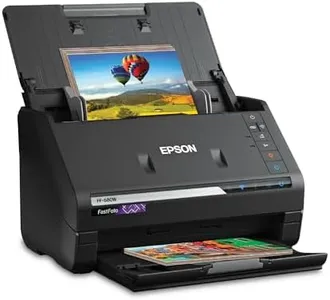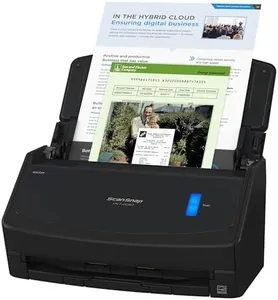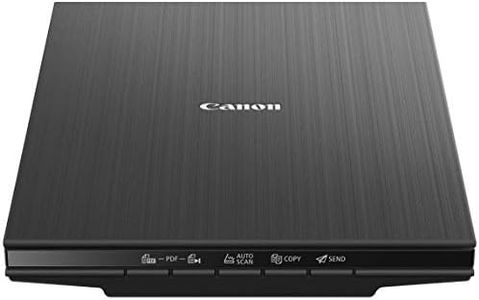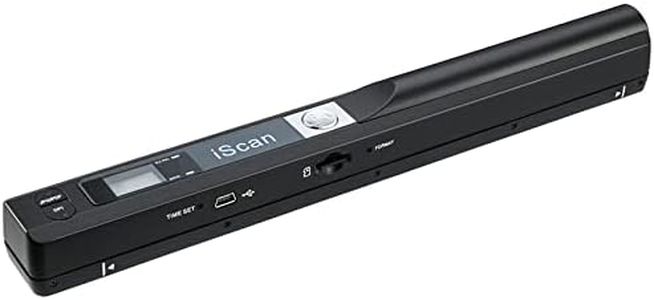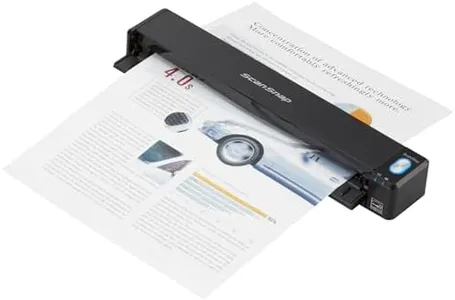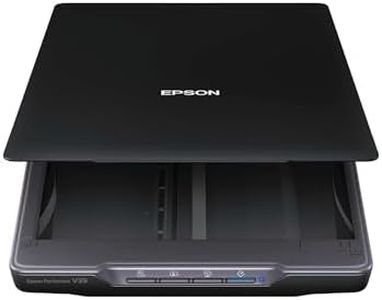We Use CookiesWe use cookies to enhance the security, performance,
functionality and for analytical and promotional activities. By continuing to browse this site you
are agreeing to our privacy policy
10 Best Portable Photo Scanners
From leading brands and best sellers available on the web.By clicking on a link to a third party's website, log data is shared with that third party.
Buying Guide for the Best Portable Photo Scanners
Choosing a portable photo scanner can greatly simplify the task of digitizing old photographs, documents, or memorabilia on the go. To find the right fit, it's important to consider what you'll use it for: occasional photo scanning at family gatherings, regular work with photos for archiving, or more specialized tasks like scanning various sizes or delicate items. Thinking about where and how often you’ll use your scanner will guide you toward features that match your lifestyle. Understanding the key specifications will help you make sense of your options and find a scanner that delivers the image quality, portability, and ease of use you need.Scanning ResolutionScanning resolution, usually measured in dots per inch (DPI), determines how detailed your digital images will be. Higher DPI means the scanner can capture more detail from your photos, which is important if you plan to enlarge scans or want to preserve tiny features. For casual photo sharing or online storage, 300-600 DPI is typically enough, while 1200 DPI or higher suits those needing professional-level detail or large printouts. If most of your photos are standard size and you don’t need extreme close-ups, a mid-range DPI offers a good balance between file size and quality.
PortabilityPortability reflects the size, weight, and how easy it is to carry and use your scanner outside of a home or office. Compact, lightweight models are easier to slip into a bag and use on the go, but may have fewer features, while larger units might offer higher performance but at the cost of convenience. If you’ll often scan at different locations or need to travel with your scanner, prioritize models designed to be truly portable.
Power SourceA scanner’s power source affects how and where you can use it. Portable scanners may use replaceable batteries, a built-in rechargeable battery, or rely on USB power from a laptop. Battery-powered models offer maximum freedom but require keeping spares or charging. USB-powered variants are handy if you usually have a laptop nearby. Consider where and how often you’ll scan: if you need all-day use without easy access to outlets, battery life becomes more important.
Feeding MechanismScanners can be flatbed or sheet-fed. Flatbeds require you to place each photo on a glass surface, which is gentle and supports odd sizes or fragile items. Sheet-fed scanners ‘pull’ photos through the device automatically, enabling faster scanning of stacks but may not be suitable for old, delicate, or thick items. If your collection includes old or fragile prints, flatbed scanning is safer. For high volumes of standard photos, sheet-fed models increase efficiency.
Connection OptionsConnection options determine how you get your scanned images off the device or control your scanner. Common choices include USB, Wi-Fi, or SD card slots. USB is straightforward for computer transfers, while Wi-Fi allows for wireless convenience and direct scanning to smartphones or tablets. SD card support lets you scan without a computer at all. If you want the most flexibility or need to scan directly to mobile devices, wireless features are valuable.
Supported Media SizeThe supported media size tells you what sizes and types of photos or documents a scanner can handle. Some portable scanners are designed mainly for standard photo sizes, while others accept a range of dimensions, from small wallet photos to wide panoramic prints. Check the types and sizes of items you plan to digitize; if your photo collection is varied, look for a scanner that specifies support for multiple sizes.
Software FeaturesBundled software can provide helpful tools such as image enhancement, cropping, or automatic color correction. Some options make it easy to remove dust and scratches, restore faded colors, or even organize and tag scanned images. If you want to spend less time editing after scanning, or plan to archive a lot of photos, more advanced software features will help streamline your workflow.
